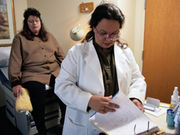Increased likelihood of poor care coordination for patients with chronic care conditions, <65 years
THURSDAY, March 30, 2017 (HealthDay News) — Factors associated with poor primary care coordination include chronic conditions and younger age, according to a study published in the March/April issue of the Annals of Family Medicine.
Jonathan Penm, B.Pharm., Ph.D., from the University of Cincinnati, and colleagues analyzed data from the 2013 Commonwealth Fund International Health Policy survey. Respondents included 13,958 adult primary care patients from Australia, Canada, France, Germany, the Netherlands, New Zealand, Norway, Sweden, Switzerland, United Kingdom, and the United States.
The researchers found that the rate of poor primary care coordination (defined as participants reporting at least three gaps in the coordination of care) was 5.2 percent overall, with the highest rate in the United States (9.8 percent). Among all respondents, the likelihood of experiencing poor primary care coordination was lower if the primary care physician often or always knew patients’ medical history, spent sufficient time, involved patients, and explained things well (odds ratios, 0.6 for each). The likelihood of poor primary care coordination was higher for patients with chronic conditions (odds ratios, 1.4 to 2.1) and patients younger than 65 years (odds ratios, 1.6 to 2.3). There was no correlation for insurance status, health status, household income, and sex with poor primary care coordination among U.S. respondents.
“The United States had the highest rate of poor primary care coordination among the 11 high-income countries evaluated,” the authors write.
Copyright © 2017 HealthDay. All rights reserved.








